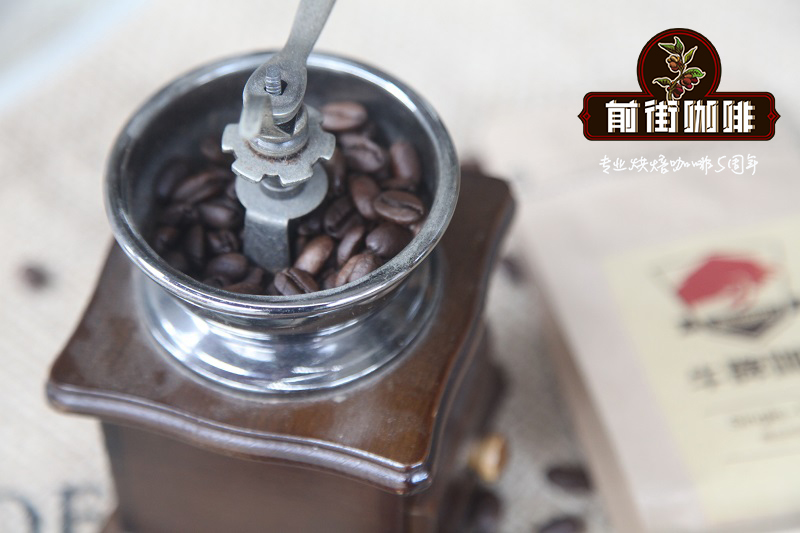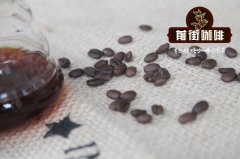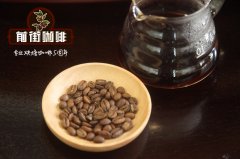Is the quality of Brazilian coffee beans good? do Brazilian coffee beans taste good? what are the brands of Brazilian coffee beans?

Professional coffee knowledge exchange more coffee bean information please follow the coffee workshop (Wechat official account cafe_style)
The vast majority of Brazilian coffee beans are unwashed and sun-dried and are classified according to the name of the state of origin and the port of transport. Brazil has 21 states and 17 states produce coffee, but four of them produce the most, accounting for 98% of the country's total output. They are Parana, Sao Paulo, Milas Gerais and Esp í rito Santo. The southern state of Parana has the most astonishing production, accounting for 50% of the total. Although coffee is diverse, Brazilian coffee beans are suitable for the taste of the public. For example, coffee produced in the northern coastal areas has a typical iodine taste, reminiscent of the sea after drinking. This coffee is exported to North America, the Middle East and Eastern Europe. Another kind of coffee that is interesting and worth pursuing is the washed Bahia coffee. This kind of coffee is not easy to find because Brazil is the world's largest consumer of coffee after the United States, and many good coffee can only be found in its domestic market. In Brazil, the second largest coffee bean producer in Brazil is Robusta coffee. This kind of coffee is sold in the supermarket. Robusta coffee, sold under the name Cornelon, accounts for 15 per cent of total production. The old Bourbon coffee is grown on some estates in the Serrado district of the state of Milas Gerais in southeastern Brazil. These estates, such as CapinBlanco Manor and Vesta. Allegre Manor, the old variety of coffee grown in Bourbon, is also sold on the market. Although they come from the same area, these coffees have their own characteristics.
Different cooking methods can show different flavor and taste.
Today, we try to brew in two ways: hand-flushing and siphoning.
The record is as follows:
In fact, as long as it is a high-quality high-quality coffee bean, even if your brewing technology is not very skillful, it can show the unique flavor of the coffee producing area, but if the coffee bean itself is defective, it is necessary to use excellent brewing technology to cover up the defective flavor. Brazilian coffee beans 16g, scale: Tiamo700s 4.5C, boiling water temperature 86C, put the smart filter cup with filter paper on the scale, pour coffee powder into the scale.
Wrap it in a concentric circle until the water reaches 198cc (to end in 30 seconds) and let the coffee flow out after standing for 1 minute.
[method 2]
Brazil 7
Put the top seat of the smart filter cup with the filter paper on the scale.
First pour 198cc's water into the smart filter cup seat, and then pour the coffee powder into
Stir (end in 30 seconds) and let the coffee flow out after standing for one minute.
[brewing result]
The first brewing method has a refreshing and tea taste, with aromas of drupe, wood and wheat, with obvious sweetness.
The second way is to taste thick, with the taste of chocolate, milk sugar, caramel, wheat and longan
Conclusion the taste of the second way is richer and more greasy, and I like it more.
Important Notice :
前街咖啡 FrontStreet Coffee has moved to new addredd:
FrontStreet Coffee Address: 315,Donghua East Road,GuangZhou
Tel:020 38364473
- Prev

How do Brazilian coffee beans taste good? is Brazil the largest coffee exporter?
Professional coffee knowledge exchange more coffee bean information please follow the coffee workshop (Wechat official account cafe_style)
- Next

Brazilian coffee bean grading system Brazilian coffee beans recommend Brazilian coffee beans what is Santos coffee
Professional coffee knowledge exchange more coffee bean information please follow the coffee workshop (Wechat official account cafe_style)
Related
- Detailed explanation of Jadeite planting Land in Panamanian Jadeite Manor introduction to the grading system of Jadeite competitive bidding, Red bid, Green bid and Rose Summer
- Story of Coffee planting in Brenka region of Costa Rica Stonehenge Manor anaerobic heavy honey treatment of flavor mouth
- What's on the barrel of Blue Mountain Coffee beans?
- Can American coffee also pull flowers? How to use hot American style to pull out a good-looking pattern?
- Can you make a cold extract with coffee beans? What is the right proportion for cold-extracted coffee formula?
- Indonesian PWN Gold Mandrine Coffee Origin Features Flavor How to Chong? Mandolin coffee is American.
- A brief introduction to the flavor characteristics of Brazilian yellow bourbon coffee beans
- What is the effect of different water quality on the flavor of cold-extracted coffee? What kind of water is best for brewing coffee?
- Why do you think of Rose Summer whenever you mention Panamanian coffee?
- Introduction to the characteristics of authentic blue mountain coffee bean producing areas? What is the CIB Coffee Authority in Jamaica?

